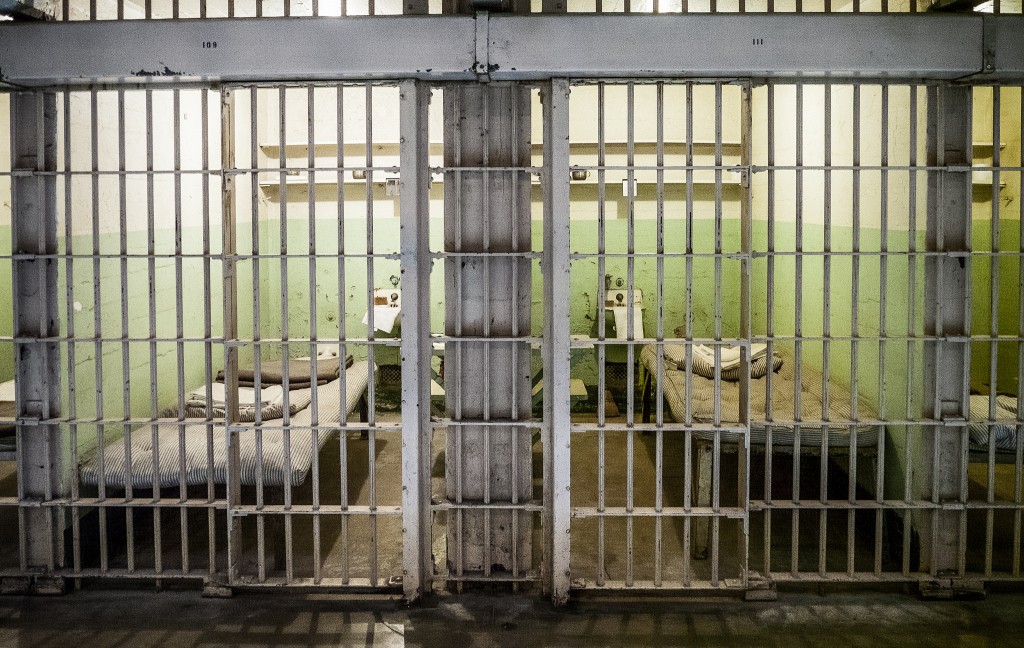This July, a New York Times investigation uncovered that 129 inmates at the Rikers Island jail complex in New York City had suffered “serious injuries”—injuries so severe that the jail’s doctors could not treat them—at the hands of corrections officers, the people who are supposed to protect them. In over 100 of these cases, the inmates reported that prison guards beat them after they were already handcuffed. And this August, the U.S. Attorney’s Office found such a “deep-seated culture of violence” at Rikers that it threatened to file a federal lawsuit unless the city took immediate action.
Since then, Rikers has made a sustained push towards reform: the Correction Department has decided to eliminate solitary confinement for juveniles by the end of the year, increased the number of correction officers, and considered removing juveniles from Rikers altogether.
But current reporting has ignored key aspects of the situation at Rikers. While news organizations have succeeded in exposing the brutality and lack of accountability at Rikers, they have failed to critically evaluate the structural causes of the problem and the proposed solutions. Specifically, mainstream media coverage has ignored how institutional racism sustains the violence at Rikers.
For all the media exposés and City Council meetings about Rikers, few if any have confronted a glaring, uncomfortable reality of the situation: the inmates at Rikers are disproportionately people of color. According to some reports, 95 percent of the youth in New York City jails are black or Latino. The story of Rikers reveals that racism in America isn’t just a matter of racial profiling on the city’s streets or biased sentencing in its courtrooms; it sustains massive human rights abuses within prisons themselves.
“If 95 percent of the young people locked up at Rikers were upper or middle-class white youth, we wouldn’t be having this conversation. It would never be allowed to happen,” Marc Schindler, the executive director of the Justice Policy Institute, a national non-profit that researches and advances criminal justice policies, stated in an interview with the HPR. “This story would be on the front page of the New York Times every single day until those kid got out. You can’t even imagine a world where that situation would exist in the first place.”
Given that there are, in fact, no mass incarceration facilities with 95 percent white inmates, it is impossible to definitively conclude that majority-white prisons would have lower levels of violence. But data from the Bureau of Justice Statistics have made clear that on an individual level, black inmates are more likely to report being sexually abused by guards. Clio Chang, a policy associate at the Century Foundation, a non-partisan public policy think tank, argued in an interview with the HPR that “racial disparities” create a “power dynamic” within prisons that makes inmates of color more vulnerable. But interestingly, Rikers does not follow a clear-cut pattern of racial violence, with white guards assaulting black or Latino inmates. As Norman Seabrook, president of the Correction Officer’s Benevolent Association, has indicated, the majority of guards are themselves people of color.
Perhaps most importantly, politicians and officials have been able to ignore the brutality at Rikers in large part because it overwhelmingly affects communities that lack the resources and political power to push for reform. “The fact that these are largely disenfranchised, marginalized communities—poor communities of color—that suffer a disproportionate impact is a result of how institutional racism persists in our country,” Mr. Schindler commented. To look at the most basic measure of political influence—voting—whites in New York City turn out at rates 13% higher than Latinos, and Latino turnout has been stagnant over the past 20 years despite vigorous mobilization efforts. Thus, politicians are much less likely to address the issues—like over-policing and brutality within prisons—that disproportionately affect these communities.
Without sustained scrutiny from politicians or the public, America’s prisons have come to share an eerie resemblance with racist institutions of the past. “There’s a certain set of informal practices that could not go on in other institutions,” Elizabeth Hinton, an Assistant Professor of History and of African and African American Studies at Harvard, stated. “In California, the prison system is segregated: black inmates and Latino inmates are physically separated from white inmates.” In fact, California only agreed to end racial segregation policies this October after facing a six-year-long civil rights lawsuit.
“Segregation,” Professor Hinton reminds us, “is illegal in this country.”
And just as these prisons harken back to explicit racial segregation, they also seem deeply intertwined with a history of exploiting black and Latino workers. In the aftermath of the super-storm Sandy, inmates at Rikers Island were paid 39 cents per hour to work in the recovery, less than 5 percent of New York’s minimum wage.
These racialized policies persist for both institutional and cultural reasons. On the one hand, Professor Hinton lamented that “the Supreme Court makes it basically impossible to challenge racial biases in the criminal justice system” and even endorses policies like racial profiling as “necessary for good policing.” On the other, Ms. Chang noted that “there are still racial tropes of laziness and bad decisions” that justify why these minorities deserve to be in prison and endure this treatment.
Racism thus plays a decisive role in creating this “culture of violence,” and in turn the brutal conditions at Rikers only reinforce discriminatory policing policies by trapping minority youth. Even youth who are just being held at Rikers while awaiting trial can rack up charges for misbehavior in the prison. “Once you get in, it’s very difficult to get out because you have to be perfect in a way that you can’t be,” Professor Hinton commented. “A kid can go to Rikers by mistake, get into a confrontation with a guard, and then be trapped there.”
Image credit: Flickr / Jumilla
